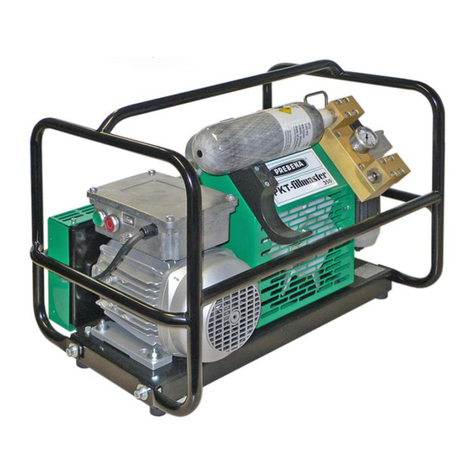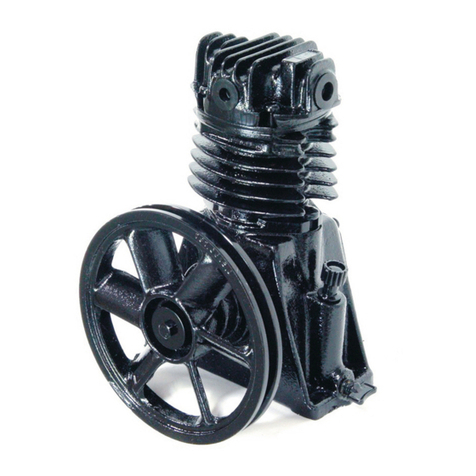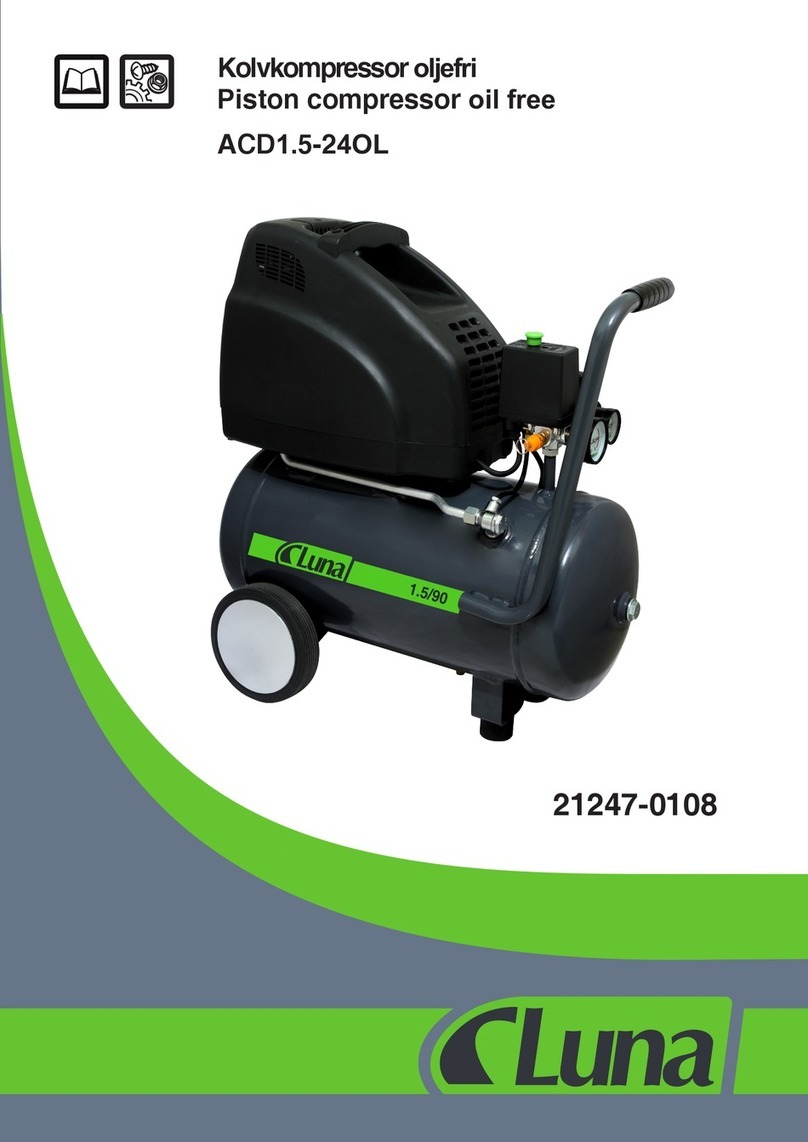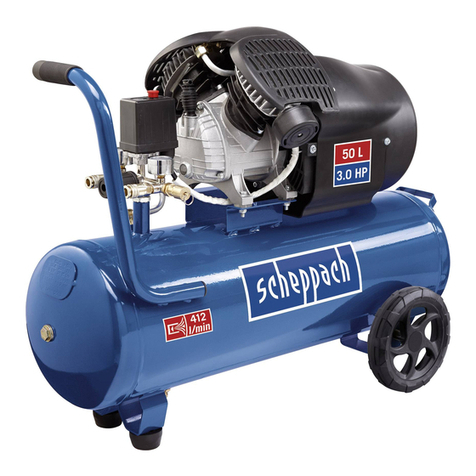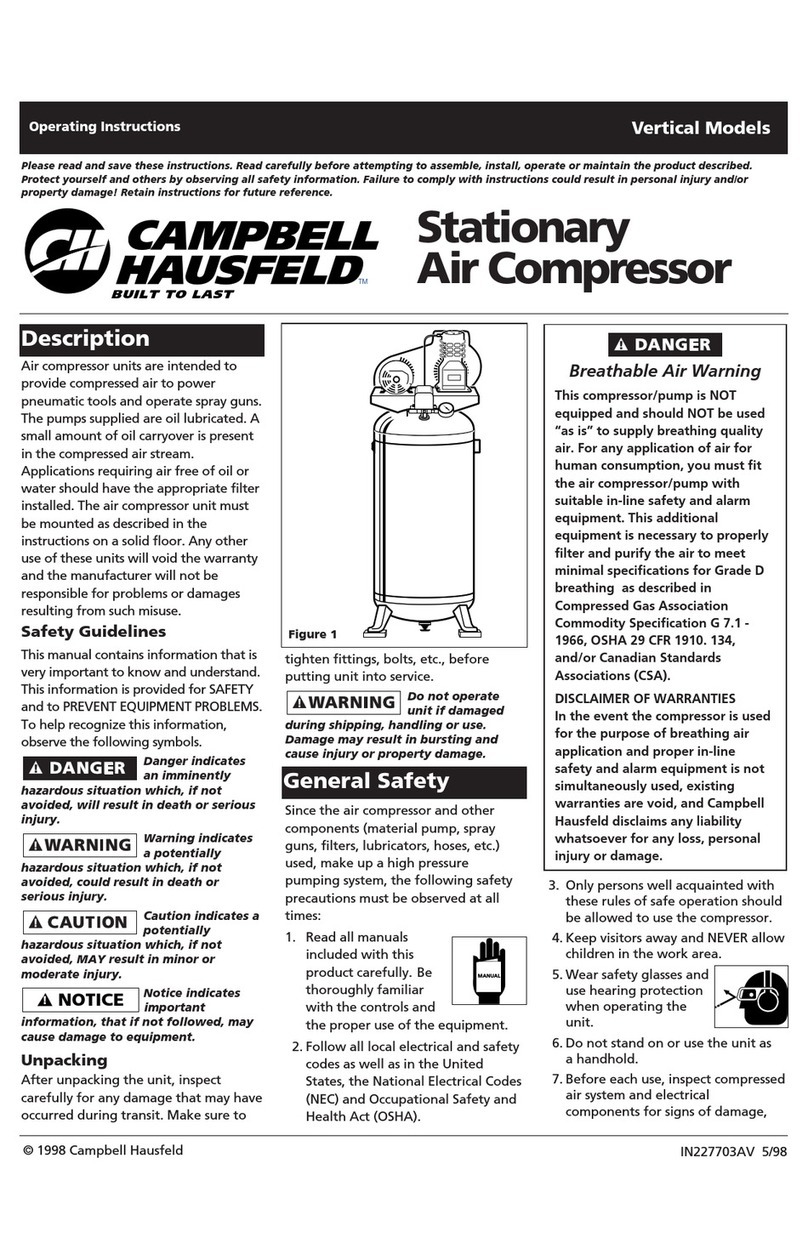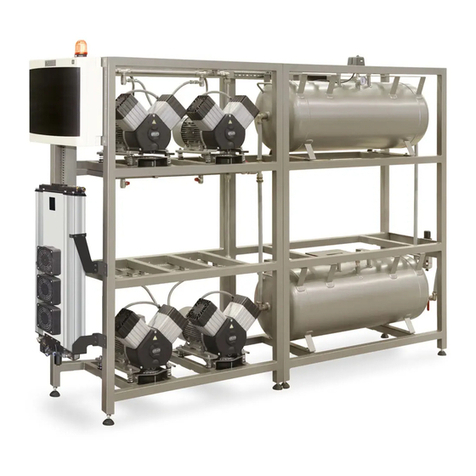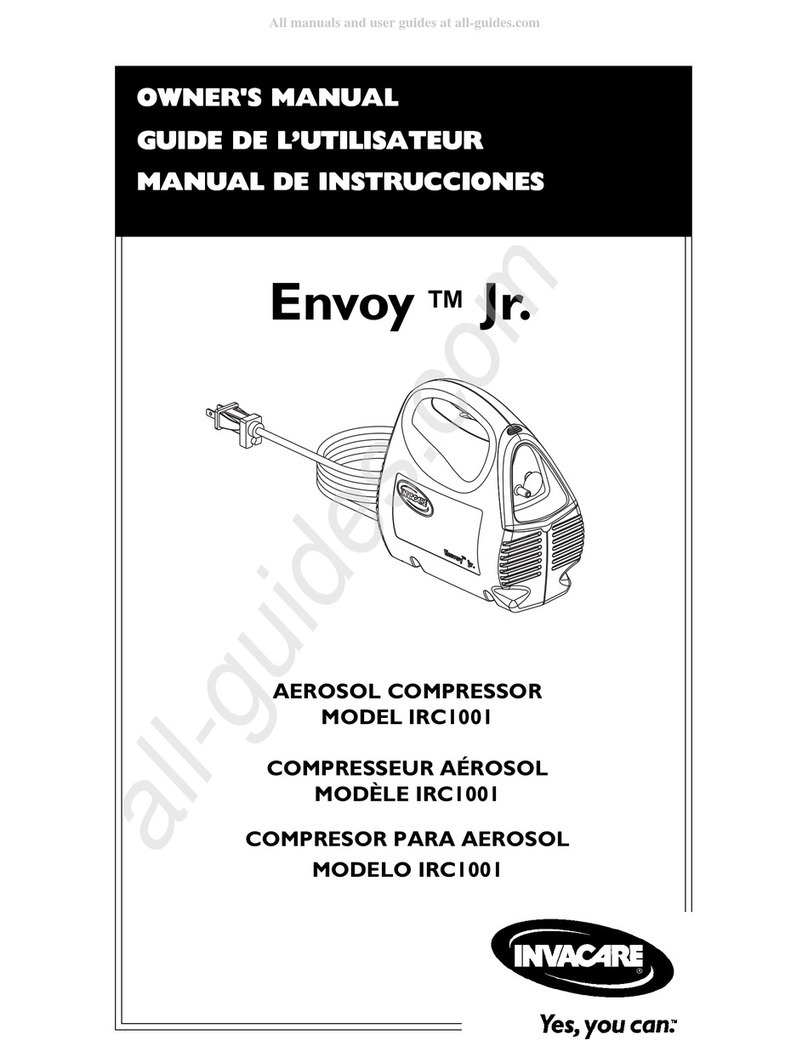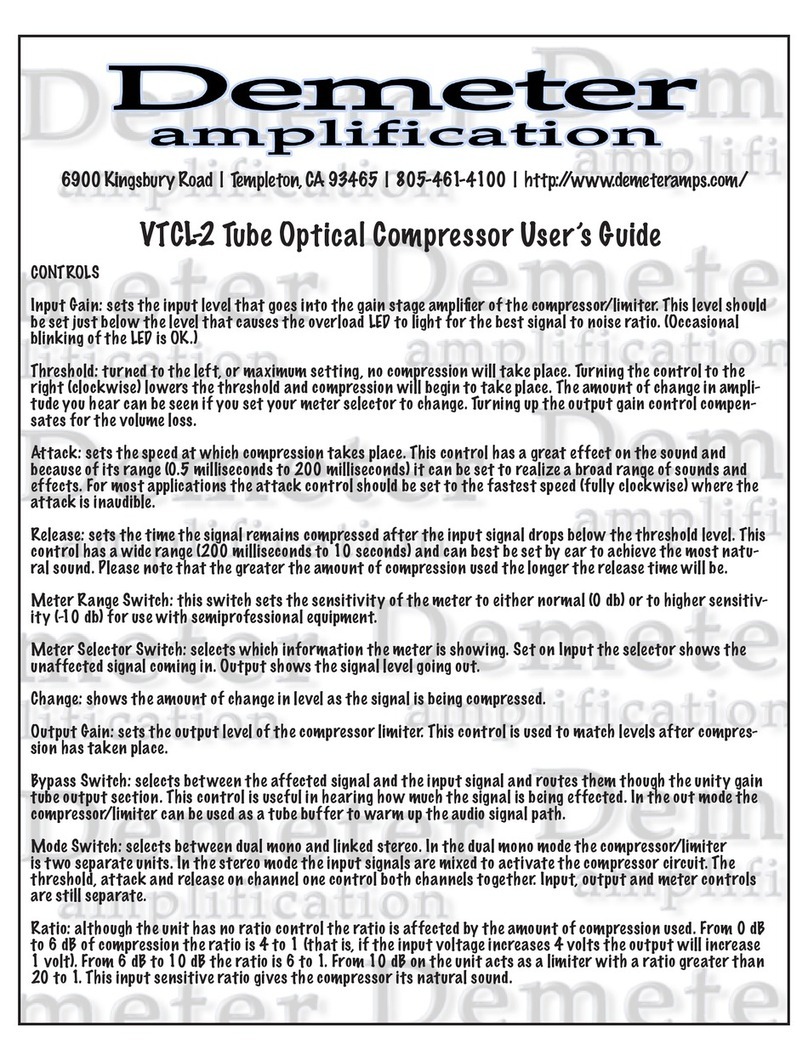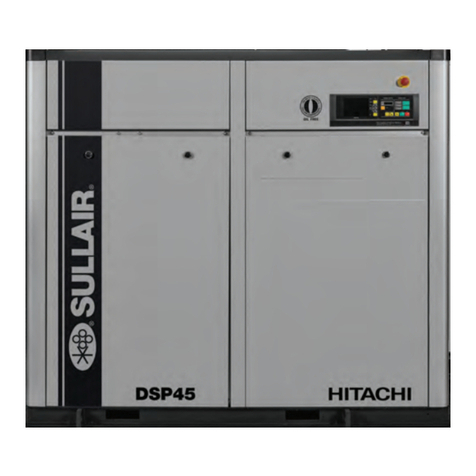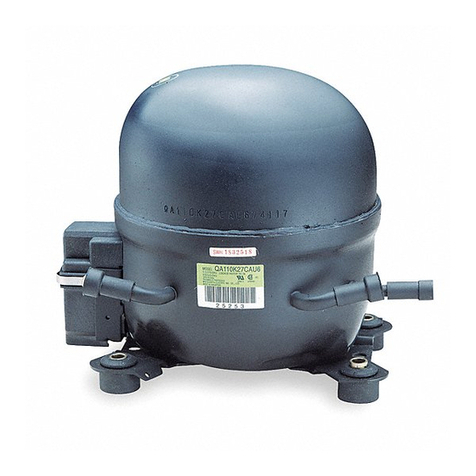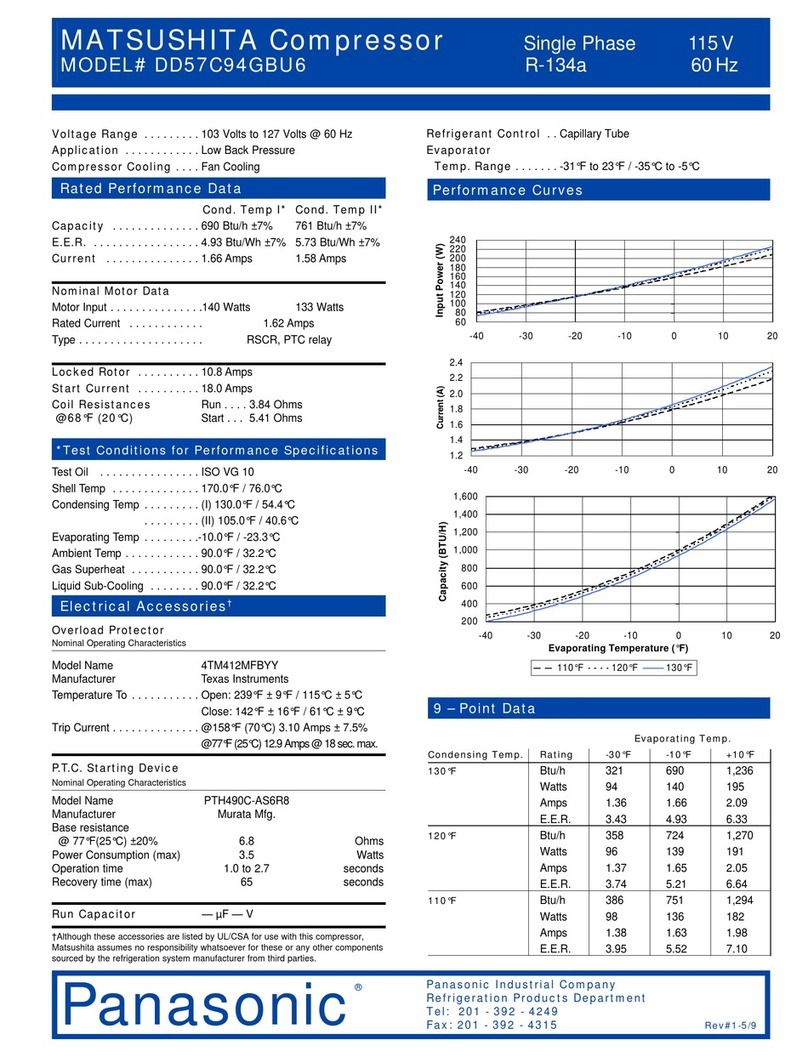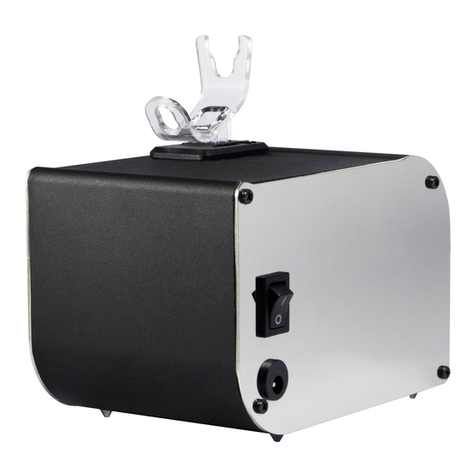
For advice on the safety and suitability of this
equipment contact your local HSS Hire Shop.
Keep children, animals and bystanders out of the
work area. Use barriers to cordon off a safe zone
around the compressor.
Never use this equipment if you are ill, feeling
tired, or under the influence of alcohol or drugs.
This equipment should only be used by a
competent person who has read and understood
these instructions.
Ensure the work area is well lit and ventilated.
NOTE: This equipment generates potentially
harmful noise levels. To comply with health and
safety at work regulations, ear defenders must be
worn by everyone in the vicinity.
Wear practical, protective clothing, plus
whatever safety gear is appropriate to the
equipment fed by the compressor. Avoid loose garments
and jewellery that could catch in moving parts.
Always double-check the unit’s general condition
before use, paying special attention to hose
connections, air taps and hoses. If it show signs of
damage or excessive wear, DO NOT USE IT. Return it
to your local HSS Hire Shop for repair.
Engines, especially the exhausts, get very hot
so switch OFF and allow to cool before
touching them.
Choose a site for the compressor that keeps
flammable materials well away from engine
and exhaust.
Fuel Safety
NEVER refuel while the engine is hot or running.
NEVER smoke or allow naked lights into the
refuelling area.
ALWAYS mop up spilt fuel quickly and change clothes
if you get any on yourself.
ALWAYS store fuel in suitable sealed containers, in a
cool, safe place, well away from the work area.
Exhaust Fumes
Never operate diesel engines in a confined space.
The exhaust contains gases that can kill.
GENERAL SAFETY Switch off the compressor before leaving
it unattended.
Ensure the tyres are in a roadworthy condition and
inflated to 65psi (4.48 bar).
Most HSS air tools require a 125 cfm compressor to
run them. The air connections used are the claw
type quick action couplings.
If the tool fails, or if its hose or coupling gets
damaged, return it. Never try to repair it yourself.
Damaged hoses are dangerous, so always handle
them with care and coil them neatly, without kinks,
for storage.
Keep the air hose/s out of harm’s way, keep them
clear of moving parts. Never run them through water,
over sharp edges or where they could trip someone.
Never allow compressed air to travel down an air
hose which is not connected to an air tool or
securely anchored, this may cause personal injury.
Never carry or pull the equipment by its air hose.
Ensure the air supply is turned OFF before
connecting or disconnecting air hoses or tools.
Stand the compressor on a firm, level surface
strong enough to bear its weight. DO NOT use on
slopes, soft ground or where there is a risk
of subsidence.
Apply the handbrake and unhook from any towing
vehicle, then set the jockey wheel to the correct height.
Check that all air supply valves are in the closed
position (see illustration).
To start the compressor from cold, turn the
ON/OFF switch to the ON position. Hold down the
start override switch (this overrides the low oil
pressure cut-out system) and simultaneously hold
down the starter switch.
The engine will turn over, then once running release
the starter switch but continue to hold down the
override switch for a further 20 seconds, until the
oil system is under pressure.
With the compressor warmed up, and the air
supply valve CLOSED, connect the air hose by
pushing it on to the valve and turn it clockwise.
Anchor the delivery end of the air hose so that it is
not aimed at any person or property then, taking great
care, slightly open the air supply valve to clear the
hose of any debris. Then fully close the valve.
GETTING STARTED
AIR SAFETY
Hour Meter
OFF / ON Cold Start
Override Starter
Switch
Oil/Overheat
Lamp Battery Warning
Lamp Pressure
Gauge
Closed
Air Supply
Valve
Air Hose
Open
